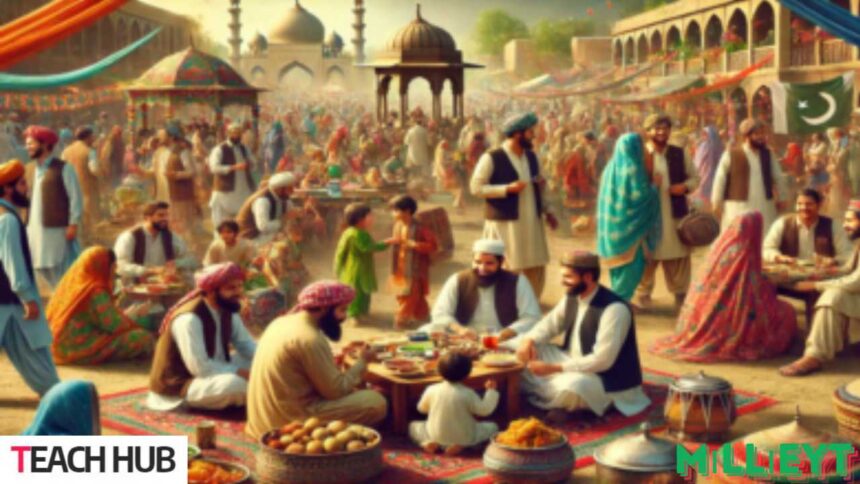Have you ever wondered about Mıllıeyt? I sure have! It’s this fascinating idea that’s all about feeling like you belong to a nation or community. It’s not just about where you’re from but about shared history, traditions, and values that unite people.
The great thing about Mıllıeyt is how it adapts to our changing world. From ancient times to today’s digital age, it keeps finding new ways to express itself. It’s in our festivals, art, education, and even how we do business. It’s like a living, breathing part of who we are.
Want to know more about how Mıllıeyt shapes our lives and connects us? Keep reading! I’ll take you on a journey through its history, show you how it pops up in different parts of our culture, and explore what it means for our future. Trust me, you won’t want to miss this!
What is Mıllıeyt?
Mıllıeyt, derived from the Turkish word for “nation” or “nationality,” encompasses more than just citizenship. It represents a profound sense of belonging, cultural heritage, and shared identity that binds people together. At its core, Mıllıeyt is about unity, community, and the collective consciousness that defines a nation.
The Historical Context of Mıllıeyt
The concept of Mıllıeyt has deep historical roots, evolving over centuries to become the influential force it is today.
- Origins in Ancient Traditions
Mıllıeyt’s origins can be traced back to ancient civilizations, where early forms of national identity began to take shape. These early expressions of communal belonging laid the groundwork for the more complex understanding of nationality we see today.
- Evolution Through Time
As empires rose and fell, the concept of Mıllıeyt adapted and transformed. The Ottoman Empire, for instance, recognized various ethnic and religious communities, known as “millets,” granting them a degree of autonomy. This multicultural approach influenced the development of Mıllıeyt in the region.
- Modern Interpretations
With the rise of nation-states in the 19th and 20th centuries, Mıllıeyt took on new significance. In Turkey, for example, the republic’s founding under Mustafa Kemal Atatürk led to a redefinition of national identity, emphasizing a secular, modernist approach distinct from the Ottoman past.
The Cultural Significance of Mıllıeyt
Mıllıeyt plays a crucial role in shaping cultural identities and social structures. Its influence can be seen in various aspects of society:
- Traditional Practices
Mıllıeyt is often expressed through:
- Festivals and celebrations
- Cultural rituals
- Traditional arts and crafts
- Folk music and dance
- Culinary traditions
These practices reinforce social bonds and cultural continuity, passing down values and customs from generation to generation.
- Modern Expressions
In today’s world, Mıllıeyt finds new forms of expression:
- Social media movements celebrating national identity
- Contemporary art exploring themes of belonging
- Literature that delves into questions of nationhood
- Films and television shows depicting national narratives
- Fashion trends incorporating traditional elements
These modern interpretations help keep the spirit of Mıllıeyt alive and relevant in a rapidly changing world.
Mıllıeyt in Literature and Art
For many years, authors, poets, and artists have drawn inspiration from the idea of Mıllıeyt. It provides a rich tapestry of themes to explore, including identity, belonging, and the human experience within a national context.
- Literary Explorations
Both classic and contemporary authors have grappled with the ideas encompassed by Mıllıeyt. Their works often:
- Examine the complexities of national identity
- Explore the tension between tradition and modernity
- Highlight the experiences of minorities within a nation
- Celebrate shared cultural heritage
- Question the nature of patriotism and nationalism
- Artistic Representations
Visual artists, too, have found in Mıllıeyt a wellspring of creativity. Through various mediums, they:
- Capture the essence of national spirit in paintings and sculptures
- Create installations that challenge perceptions of identity
- Use traditional crafts to connect with cultural roots
- Produce films that tell stories of national significance
- Design public spaces that reflect a sense of shared heritage
The Role of Mıllıeyt in Education
Education plays a vital role in transmitting the values and ideas associated with Mıllıeyt. Schools and universities often incorporate elements of national identity into their curricula, fostering a sense of pride and understanding among students.
- Curriculum Integration
Educational institutions may:
- Teach national history and cultural studies
- Promote the use of national languages
- Organize cultural events and celebrations
- Encourage research into national heritage and traditions
- Facilitate exchanges to promote cross-cultural understanding
- Impact on Youth
For young people, engagement with Mıllıeyt through education can:
- Provide a sense of belonging and purpose
- Encourage civic engagement and participation
- Foster an appreciation for cultural diversity
- Develop critical thinking about national identity
- Prepare them for global citizenship while maintaining cultural roots
Mıllıeyt in the Digital Age
The development of technology has created new opportunities for Mıllıeyt expression and exploration. Digital platforms allow for the sharing of traditions and stories on a global scale, breaking down barriers and building virtual communities.
- Technological Advancements
Some ways technology intersects with Mıllıeyt include:
- Social media campaigns promoting national culture
- Online archives preserving historical documents and artifacts
- Virtual reality experiences of cultural sites and events
- Language learning apps focusing on national languages
- Digital marketplaces for traditional crafts and products
- Future Prospects
As technology continues to evolve, so will the ways Mıllıeyt is practiced and celebrated. The future holds exciting potential for even greater integration of national identity in the digital realm, potentially leading to:
- Enhanced global understanding of diverse cultures
- New forms of digital art expressing national identity
- Virtual cultural exchanges and collaborations
- Preservation of endangered languages and traditions
- Innovation in governance and civic participation
Economic Aspects of Mıllıeyt
Mıllıeyt also has significant economic dimensions, contributing to various sectors and driving growth uniquely.
- Cultural Tourism
Many countries leverage their national identity to attract tourists, offering:
- Cultural heritage sites and museums
- Traditional festivals and events
- Culinary tours showcasing national cuisine
- Artisan workshops and markets
- Historical reenactments and living museums
- Creative Industries
The concept of Mıllıeyt often fuels creative industries, including:
- Fashion designers incorporating traditional elements
- Film and television productions telling national stories
- The music industry promotes local genres and artists
- Publishing houses focusing on national literature
- Gaming companies creating games based on national myths and legends
- Entrepreneurship and Innovation
Entrepreneurs are finding innovative ways to incorporate Mıllıeyt into their business models:
- Startups developing apps to teach national languages
- Eco-tourism ventures highlighting natural heritage
- Sustainable fashion brands using traditional techniques
- Food tech companies modernizing traditional recipes
- Fintech solutions inspired by traditional economic practices
Challenges and Controversies
While Mıllıeyt can be a unifying force, it also faces challenges in our increasingly globalized world.
- Balancing Tradition and Modernity
One of the primary challenges is maintaining cultural heritage while embracing progress. This involves:
- Preserving traditional practices without becoming stagnant
- Adapting customs to changing social norms
- Integrating technological advancements without losing cultural essence
- Addressing generational gaps in understanding and appreciating Mıllıeyt
- Navigating the impact of global popular culture on national identity
- Inclusion and Diversity
Another crucial aspect is ensuring that the concept of Mıllıeyt is inclusive and respectful of diversity:
- Recognizing and celebrating minority cultures within the nation
- Addressing historical injustices and promoting reconciliation
- Fostering a sense of belonging for immigrant communities
- Combating nationalism that excludes or marginalizes certain groups
- Promoting a vision of national identity that embraces multiculturalism
(FAQs)
What is the basic definition of Mıllıeyt?
Mıllıeyt refers to the concept of national identity, encompassing shared cultural heritage, traditions, and a sense of belonging to a particular nation or community.
How has Mıllıeyt evolved?
Mıllıeyt has evolved from ancient tribal affiliations to complex national identities, adapting to historical changes, political shifts, and cultural developments throughout history.
What role does education play in promoting Mıllıeyt?
Education is crucial in transmitting national values, teaching cultural heritage, and fostering a national identity among younger generations.
How is technology impacting the expression of Mıllıeyt?
Technology allows for new forms of cultural expression, preservation of traditions through digital means, and global sharing of national identities through social media and online platforms.
What are some challenges facing the concept of Mıllıeyt in the modern world?
Challenges include:
- Balancing tradition with modernity.
- Ensuring inclusivity and diversity.
- Addressing the impacts of globalization.
- Navigating the complexities of multicultural societies.
Conclusion
Mıllıeyt remains a powerful and complex concept in our modern world. It is a source of identity, pride, and belonging for millions worldwide. While it faces challenges in an era of globalization and rapid change, Mıllıeyt continues to adapt and evolve. By embracing diversity, fostering inclusive practices, and leveraging technology, nations can ensure that their unique cultural identities survive and thrive in the 21st century.



